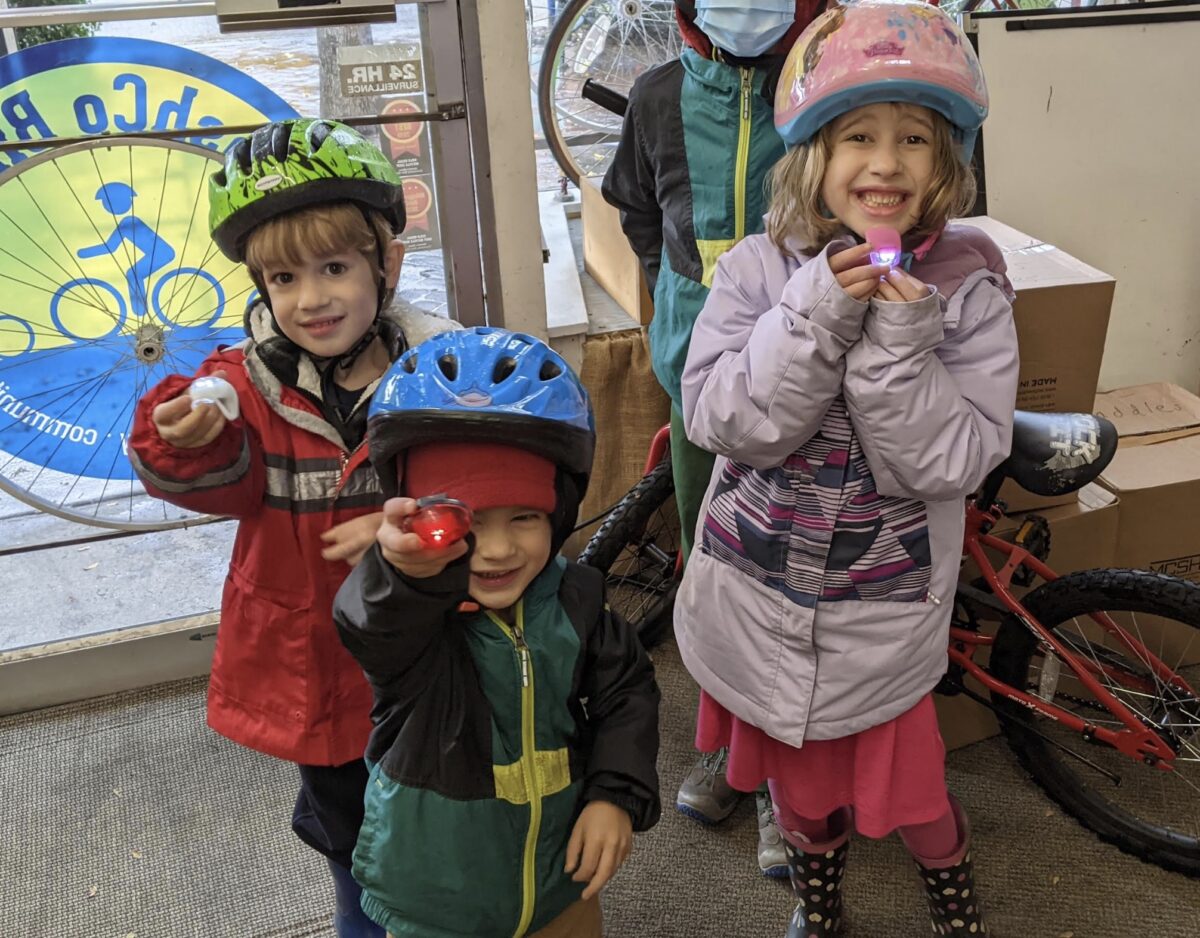
(Photos: Shannon Johnson/BikePortland)
After our recent visits to some ‘traffic gardens’ to practice bike skills and signalling, I’ve been thinking more about bike safety with our family and asking a lot of questions:
– How can we improve our family bicycle and traffic safety?
– What are our safety weaknesses or bad habits?
– What skills do we need to teach and practice with our children?
– And what potentially dangerous situations do we confront that we can better prepare ourselves for?
Now seems to be a good time for a self-check of our safety practices, especially as rain, leaves and early darkness pose additional dangers. Here’s what we’re doing, thinking, learning, and working on:
Always Wear a Helmet: Check.
Always Wear a Helmet Properly: Oof!

I confess: We have some helmet fit problems. When I honestly examine this basic tenet of bicycle safety, I am humbled to admit that I have been failing with two of my children. They wear helmets, yes, but they haven’t been wearing them properly. My kids are sort of wearing their helmets. That seems like a victory! But the pavement won’t provide softer cushion because we got our helmets halfway on.
For my oldest son, the tightening strap is broken and doesn’t maintain a snug fit, so he needs a new helmet, pronto. I’m also having helmet trouble with my four-year-old who has very thick bangs. We’ve tried multiple helmets and he always wears them pushed too far back on his head. When I try to secure the helmet properly on his forehead, he bursts into tears, saying it’s too tight. Honestly, we just keep failing to get a correct and comfortable fit for him. Finally, I’ve decided to order a skater-style helmet (dual-certified for use with bicycles and skateboards), to see if we can get a more comfortable fit with a different style of helmet. I’ll let you know how it goes.
Advertisement
Lights and visibility:
I really hadn’t expected to need this. I didn’t think we’d be doing any biking in darkness or poor visibility conditions (like rain), but we have already been caught out at dusk, lingering at the library or park longer than intended, then racing the sunset to get home before total darkness shrouded us in a cloak of dangerous invisibility.
To lighten ourselves up, we made a trip to the bike shop to pick up a handful of blinky lights and headlights. We’re also trying to improve our clothing choices. I originally bought a rain poncho in a stylish and subdued green, but decided to return and exchange it for a much brighter yellow (even though I look wretched in yellow!) I should model what I preach: Safety over fashion. I also bought a few cheap reflective vests for my kids, especially my oldest son, whose wardrobe seems to consist of various shades of black. We haven’t tried those out yet, but I plan to use them the next time we head out in the evening. I want my kiddos to be as visible as possible.
Take time to prepare and check equipment:
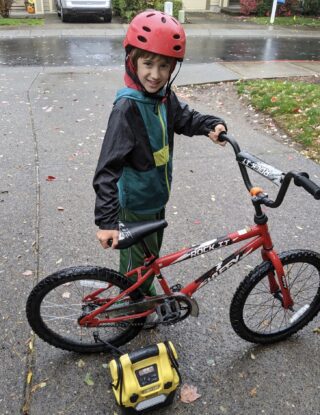
I’m working to make peace with the need to allow an extra five or ten minutes to make sure we are really ready to ride. That means adjusting everyone’s helmets, turning on lights, making sure we have proper outdoor and reflective gear, and yes, pumping up those tires (which lose air over time, even if they don’t have a flat). Rushing and running late, unprepared and distracted, is such an easy trap to fall into, but it can be dangerous. And it is no fun to ride on low/flat tires. Taking the bit of extra time could really save us, in more ways than one.
Double-check the weather: Yeah, we got caught in a hail storm already too. I didn’t want to admit that the sky looked bad. I had spent an hour getting us ready to get out the door, and everyone was finally ready to go… then we arrived under the library roof just in time to watch the hail come cascading down. We got lucky that time, but it would be far wiser to check the weather with one of those nifty apps like Dark Sky that would just let us know we could wait 15 minutes for the storm to pass.
So, those are the ways we’re working to level-up our safety game, with proper gear and preparation. Are we forgetting anything? Next week, I’ll share the safety conversations we’ve been having with our oldest kiddo, as we prepare him for the confusing and dangerous biking situations we encounter out on the road. Safe travels, ya’ll.


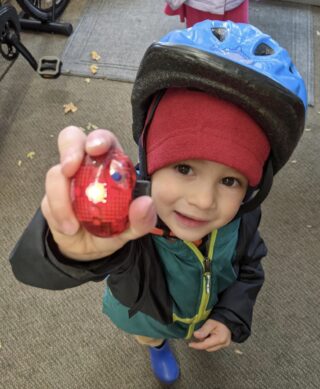
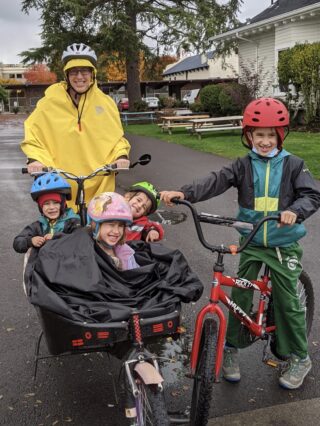
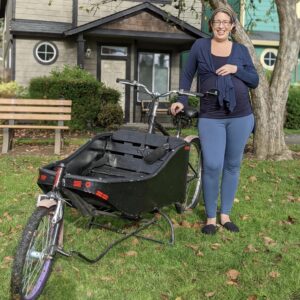



Thanks for reading.
BikePortland has served this community with independent community journalism since 2005. We rely on subscriptions from readers like you to survive. Your financial support is vital in keeping this valuable resource alive and well.
Please subscribe today to strengthen and expand our work.
Read to the kids Watership Down. It is a fun story about a clan of traveling rabbits. The are quick, clever and agile and the world around them conspires to do them harm. Just like bicyclists. The hardware of safety is important but not more important than having the brain right with situational awareness.
Thank you for the article
Consider adding stick-on reflective spots to anything that is hard to see in the dark, such as that black plastic cover on your Bakfiets.
Okay, so the best way to make us all safer isn’t by our own behavior, but with better infrastructure. That’s not something we can buy at the store (if only!), but it’s important for us all to be a voice for that in our local and regional governments. We need separated, protected bike infrastructure.
It’s also important to keep in mind the most common ways we can get injured, especially but not only from driver behavior. Sounds like you’ll be writing about this next week? Off the top of my head:
As for safety equipment, I’m not convinced it all works like we think it does. The Sprocket Podcast did a whole episode on this in the spring, so you can hear our thoughts on bicycling safety culture there if you like.
A few things about some of these items. First, there’s a debate about helmets. I’m not going to dive into this, but it’s not without controversy. I’m not saying don’t have your kids wear helmets but just alerting you that not everyone agrees on this. Same with high viz clothes. It’s not clear that wearing bright clothes helps keep us that safer during the day, and it doesn’t do anything at night.
I am a believer in that retroreflective material, especially at night, and especially on our bikes. I’d get some of that tape and slap it on fenders, pedals, bike frames, jackets, panniers, etc. Don’t forget the sides of things. Make sure to put it on the bike and not only on things you wear. Put it on parts of the bike that move (like pedals) because movement grabs attention. You can experiment with this at home. Go outside when it’s dark and shine a flashlight on a bright yellow jacket and then shine a flashlight on something with any kind of retroreflective material.
Finally, you called them blinky lights, and I do that too, but blinking our lights doesn’t necessarily make us safer. I know these lights have all these very bright blinking options, but some studies have shown that blinking catches drivers’ attention but makes it hard to track where someone is. A steady light may makes it easier for someone to track your location. So please don’t blink your lights, which can also blind other folks on bikes. Or, if you do blink your light, make sure it’s not the brightest one you have. If you use very bright lights, don’t aim them up! Aim them below the eye levels of other people.
Also, always carry an extra few lights, especially ones that can attach to someone’s clothing. Batteries wear out, and bikes get lost.
This is a lot, isn’t it?
Thank you for pointing out how unhelpful/contra-helpful those blinking lights can be! The other obvious downside to them is that if your lights are blinking, they are doing a very poor job in lighting up the pavement in front of you and making it really hard for your eyes to adjust to the rapidly changing light levels. I want a nice steady light to try to see where I am going so I don’t run into obstacles (patch of slick leaves, curb, stick, etc) and hurt myself.
This is great feedback. Thank you! I totally forgot about the right and left hook dangers; I’ll need to add that to our list of things to discuss and look out for. I did remember about “dooring,” but not at first, even though I had a pretty good encounter with a car door in my younger days. (Ouch!) I appreciate the note on reflective material. I bought cheap reflective vests for my kiddos to throw over any clothes they are wearing, if we might be out at dusk. I have been thinking about getting reflective stickers for my bike cargo basket too–good idea. And I will check out your recommended podcast. Thanks for all of the suggestions.